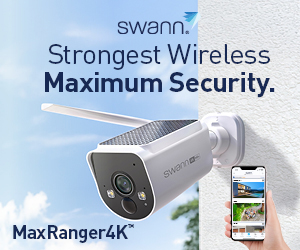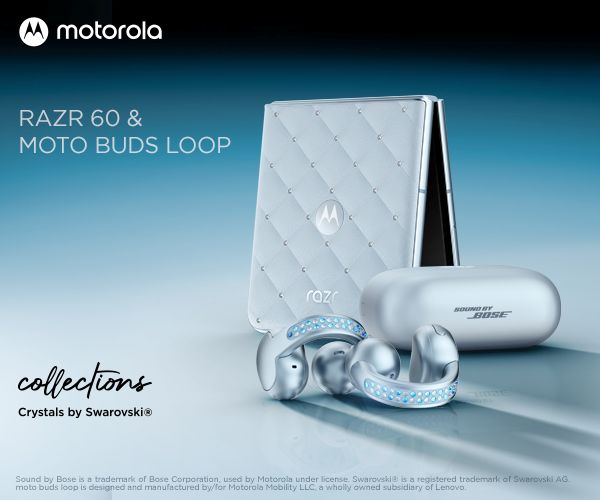The ASUS Zenfone 10 has a smallish 5.9” AMOLED screen but a whopping V8 Qualcomm SD8 Gen 2 under the bonnet. If you want a small, pocketable powerhouse, this is it.
It is also a phone full of ASUS-inspired curiosities (in a good way) built into its ASUS-optimised launcher overlay over Android. For example, it offers a choice of high, dynamic, durable, or ultra-durable performance modes. Yet regardless of the mode, it pops up a recommendation for the most appropriate mode for the task. We usually test on defaults, but this has moving goalposts.
Or, instead of the usual natural or vivid screen colour gamut, it has splendid settings with optimal, natural, cinematic, standard, and customised settings. Similarly, the display settings are amongst the most comprehensive I have seen. Ditto for almost every typical Android setting where you are spoilt for choice.
So, apologies for any test inconsistencies; AI seems to be in the driver’s seat.
Australian Review: Asus Zenfone 10, 8/256GB, dual sim, model AI2302-2B048WW
Prices and specifications are correct as of 12/12/23.
| Website | Product Page Manual | |
| RRP | 8/256GB $1,299 (currently at JB Hi-Fi for $1039) 16/512GB $1,499 Midnight Black only (currently at JB Hi-Fi for $1199) | |
| From* | ASUS Online and JB Hi-Fi | |
| Warranty | 1-year ACL | |
| Made in | China | |
| About | Asustek Computer is a Taiwanese company that produces motherboards, graphics cards, optical drives, PDAs, computer monitors, notebook computers, servers, networking products, mobile phones, computer cases, computer components, and computer cooling systems. | |
| More | CyberShack ASUS news and reviews CyberShack smartphone news and reviews | |
* Grey market – no Australian warranty, and 5G may not work
We strongly advise buying a genuine model with Australian firmware from the approved retailers above. It is easy to identify the Australian version – under Settings, About Phone, and Regulatory Labels, there is an Australian R-NZ C-tick mark. There is also an R-NZ C-Tick on the box. They use Australian 5G sub-6Ghz and 5G low-band frequencies, requiring local activation first. Read Don’t buy a grey market phone (guide).
Deep-dive review
We perform over 70 tests, and the full specs are in a table at the end. The first part is an essential summary only.
We use Fail (below expectations), Passable (meets low expectations), Pass (meets expectations), Pass+ (near Exceed but not class-leading) and Exceed (surpasses expectations or is the class leader) against many of the items below. You can click on most images for an enlargement.
Upfront spoiler alert
This is your only choice if you are solely looking for a sub-6” powerhouse. You could look at the $749, 6.1” Google Pixel 7a 128GB or $1249 6.1” Samsung S23 256GB, but that is about the extent of decent small phones.
I can’t recommend it for Joe and Jane Average. It is not a bad phone, but there are phones with less complexity and compromises.
It is an excellent phone for the tech-savvy. This review is aimed at them – and we point out features/issues that only affect power users.
We discovered the following that may be deal breakers for this group (re-tested on later firmware):
- USB-C 2.0 480Mbps is a deal breaker for anyone wanting ALT DP audio/video/data/charging capability to a monitor, etc. The Qualcomm SD8 Gen 2 supports USB-C 3.2 Gen 2 (10Mbps), and we don’t know what ASUS would cripple this phone.
- An 8-bit/16.7M colour AMOLED (not LTPO) Samsung screen. Frankly, apart from Samsung and Google Pixel using this, every other mainstream manufacturer has moved to 10-bit/1.07 billion colour screens. The ASUS image preview (still or video) is inaccurate; it exhibits some colour banding, and while it supports Samsung’s HDR10+, it does not support Dolby Vision. Even the $399 Moto g84 has 10-bit pOLED.
- Screen brightness is behind the main competitors. It is daylight readable – but the $399 Moto g84 is way more readable.
- The screen suffers from a low 240Hz Pulse Width Modulation (PWM) flicker that can induce headaches and eye strain for sensitive people. You can enable flickerless DC Dimming but only at a fixed 60Hz.
- It advertises 144Hz gaming mode using the Game Genie system settings but only applies to a minuscule number of games. Refresh steps from 60/90/120Hz. And a 5.9” screen is too small for games anyway.
- Throttling of up to 40% is unacceptable and gets very hot under load. Performance mode is 55°, and Durable mode is 44°, which is too hot to hold.
Continued
- A 1-year warranty is outclassed by others offering two years.
- Relatively short two OS upgrades and four years of security patches.
- Qi charging has issues. Using several Qi chargers, including the excellent Belkin BoostCharge 15W WIB002 Qi wireless charger, the charge coil alignment was impossible without lifting the phone at least 10mm.
- The Camera app was flaky, showing a white screen several times. It required an unload and load to fix that (we think the new firmware has fixed this).
- The lack of Autofocus and AI post-processing on the Ultra-wide/Marco camera makes it less useful. Lack of optical zoom means 8X digital zoom at best.
- No micro-SD expansion – yet it has a 3.5mm audio port.
- Wi-Fi 7 BE is flaky. Like the Google Pixel 8 Pro, it required enable/disable; if lucky, you got the 6Ghz network (New firmware has not fixed this).
That may sound like a horror list, so here are a few positives:
- Battery life is excellent, and has a 30W charger inbox. 20 hours and 10 minutes on the PC Mark 3.0 battery test and 23 hours 1080p video loop. Charging is 1 hour 30 minutes – a little slow.
- Performance mode reduces battery life from 20-40% – all tests were on Dynamic mode.
- Zen UI offers far greater customisation options for Android while leaving it largely pure.
- Qualcomm SD8 Gen 2 is the 2023 powerhouse flagship processor. Do you need that if screen size is the unique selling proposition?
- 3.5mm headphone jack
- OIS on the primary camera sensor is very good, and AI post-processing has improved.
- IP68 dust and water resistance
Believe it or not, the above is not intended to turn you off the ASUS Zenfone 10 but to provide a 100% accurate and independent review that equips you to make a purchase decision.
On with the review.

First Impression – Pass+
While it has a smaller 5.9” screen in a 146.5 x 68.1 x 9.4 mm x 172g body, the Samsung S23 (same processor) has a 6.1” screen in a 146.3 x 70.9 x 7.6mm x 168g body (Read Samsung Galaxy S23 series – first flagships of 2023). The wider bezels explain the size difference.
You are either going to love or hate the colourful backs. It uses a bio-based PMMA (polycarbonate) with a kind of rough texture feel. It is quite grippy and small in the hand.
Otherwise, it is an unremarkable glass slab apart from the 3.5mm 4-pole headphone port (that you don’t see in flagships).
You buy this for its screen size.
Screen – Pass
A flagship should have a 10-bit/1.07 billion colour screen – hell, even a $399 Moto G84 has one. Why? This does not, settling for an 8-bit/16.7M old tech Samsung AMOLED panel as used in previous Zenfones.
Video and still Image previews are not colour-accurate, and colour banding in HDR10+ content is evident. It does not support Dolby Vision decode but uses Samsung’s HDR10+ royalty-free video codec. Read 8-bit versus 10-bit screen colours. What is the big deal? Even Motorola’s $399 g84 has a 10-bit screen.

Apart from that, non-LTPO AMOLED means it has 60, 90 and 120Hz stepped adaptive (not down to 1Hz as LTPO has).
Peak brightness is claimed at 1100 nits, but that is in a 5% window for HDR 10/10+ content (Test 1065). Typically, it sits at 440 nits (manual maximum) and can momentarily go to 789 nits in HBM (auto-high-brightness mode). All manufacturers quote peak nits – a meaningless statistic.
It has a DC Dimming mode (60Hz only) that removes flicker, but if you use any other refresh setting, you get PWM flicker at 240Hz – sufficiently low to affect PWM-sensitive people.
YouTube can play 1080p HDR video content, but Netflix and Amazon Prime can only play 1080p SDR.
Screen summary: While an 8-bit screen is fit for purpose, we don’t expect to see it in a flagship. Camera image preview colour mismatch is the most evident issue.
Processor – Qualcomm SD8 gen 2 – Pass
Usually, the SD8 gen 2 gets a Pass+ or Exceed, but this throttles badly, losing up to 40% of its power (Performance mode) over the 15-minute test. Also, the SoC reaches 63° (very hot), and the outside reaches 55°, which is too hot to hold (the ambient temperature was 22°, and the phone was placed vertically, allowing good air circulation around it).
Update 16/12/23: Following firmware update 33.0220.0220.101 we re-ran the throttling tests in performance and dynamic modes.


The images above show performance mode, and while old and new firmware both throttle by 40%, the new firmware extracts a little more performance.


The image above shows Dynamic mode, and it is a huge difference. It has lowered the GIPS from 314,028 to 195,118 and, in doing so, has reduced throttling from 28% to 5% and given a higher minimum GIPS figure (132,519 versus 179,898).
As long as you are not a power user or gamer, that won’t matter, but why are you buying the world’s fastest chip in the first place if you don’t intend to use it?
The review unit has the fastest available 16GB/512GB LPDDR5X/UFS 4.0 RAM/Storage. But it only implements USB-C 2.0 at 480Mbps (half-duplex 60MBps). There is no USB-C 3.2 Gen 1 (5Gbps) or 2 (10Gbps) that supports audio/video/data/charging over USB-C. That means no screen mirror to monitors or TVs over USB-C to USB-C/HDMI or DP.
It also means no fast transfer to external SSD and is limited to 34/33MBps sequential read/write.
For me, that is a deal breaker.
Comms – Pass (should be Exceed)
This has Wi-Fi 7 BE, and we tested it with the new Nighthawk Tri-Band WiFi 7 Router, 19Gbps, 10 Gig Ports. We now have several Wi-Fi 7 devices to test with to give us benchmarks.
Side-by-side with the Google Pixel 8 Pro, it gets -42dBM/395Mbps versus -36dBM/2,882Mbps on the same Channel 259, 6295Mhz, 160Mhz band. We re-tested with the updated firmware and the result has not changed.

We got even stranger readings as we tested at 0, 2, 5,10, and 15m. At 2m, it jumped to 2882Mbps (6GHz), then started swapping between 2.4GHz at 344Mbps. At 5m, it could not find the 6GHz signal and connected to the 5GHz signal.
We re-tested with Netgear Orbi RBKE963 Quad-band Wi-Fi 6E AX 11000 mesh, and the ASUS performed as it should. Wi-Fi 6E 6GHz to 8m. Wi-Fi 6 5Ghz to 15m and Wi-Fi 2.4Ghz to 30+ metres.
The bottom line is that its Wi-Fi 7 control software needs work – it simply is unreliable.
4/5G – Pass (should be Exceed)
Qualcomm’s X70 modem has the strongest signal reception. On the Pixel 8 and Pro, OPPO Find N3 Fold and more. It finds all four closest towers with usable speeds from 500fW to as high as 12pW. Not ASUS.
In our three-bar test area, it found the first tower at a respectable level -84dBM and up to 4pW. But it would not find any other towers. A reboot saw that change to -99/125fW, and it found the other towers at unusable speeds – 106/123/125dBM. We re-tested over several days, getting essentially the same result.
This is most unusual. We retested with the updated firmware and it now finds tower two at -103/50fW – barely usable. We trust it is firmware fixable as it is currently a deal breaker and is only for cities and suburbs with good tower coverage.
Battery – Pass+
The smaller 8-bit screen with stepped refresh rates and AI performance modes means two things. First, it can get decent battery life, but second, you need to understand that it is performance setting-dependent.
We tested on Dynamic Mode – Performance is above that, and Durable and Ultra Durable below that. Performance can nearly halve battery life, so use it sparingly.
- The video loop was 23 hours (14 Performance), and PC Mark 3 Battery life was 20 hours (12.5 Performance).
- 100% load drain was 7 hours (4.5 Performance).
- Charge time with the 30W charger was 1 hour 29 minutes. It tended to charge at 8V/3A/24W and reduced wattage as it filled.
Qi charging was problematic. We tested with several 15W chargers, including stands and pads. In every case, it was critical to align the coils, or it charged intermittently. We needed a 10mm chock in portrait and landscape mode charging on most stand chargers. We needed to check that it was still charging when placed on a flat pad as often it would initially show as charging but drop out.
Each Qi charger tested is rated at 5V/3A/15W and 9V/1.67A/15W and delivers that to OPPO, Motorola and Samsung phones. But the fastest we could get was 9V/1A/9W using the Belkin and OPPO Qi chargers and a measly 9V/.5A/4.5W on a Samsung charger.
The moral of this story is to check any Qi charger first with the free Battery Charge Meter – Ampere.
Sound – Pass
It has Dirac-tuned sound, which makes it marginally better than most as it has both an EQ and Dynamic, Music, Cinema, and Game pre-sets.
Our testing uses a white noise generator to assess the native sound signature. From there, Dirac can reduce (not enhance) any frequency rage. Note: Dirac tuning tends to focus on headphones, and it has a full suite of Qualcomm Bluetooth codecs and 24-bit/192kHz high res via the 3.5mm port. Read How to tell if you have good music (sound signature is the key.
It has no low-or-mid-bass. High bass (100Hz) starts late (135Hz) and is barely noticeable as it begins a long, slow journey to 1kHz, where it is flat to 5kHz and then linearly declines to 20kHz.
This is a classic mid signature (bass recessed, mid boosted, treble recessed) for clear voice. It is not for music unless you use headphones, and Dirac comes to the fore.

Maximum volume is 78dB with occasional peaks at 82dB. The sound stage is biased to the bottom speaker, but overall, it presents slightly wider than the phone. Dolby Atmos content adds a sense of 3D height and width.
Hands-free is OK with dial noise-cancelling mics. It claims 3D OZO recording, but this usually requires more than two microphones to be effective.
Build – Pass+
IP68, PMMA back, Gorilla Glass Victus front and a nice grippy finish. It appears well made, although we question why the global model has a two-year warranty to one year here. Here, the colour range is more important:
- Midnight Black (256/512GB version)
- Comet White (256GB only)
- Eclipse Red – ditto
- Aurora Green – ditto
- Starry Blue – ditto.
It comes with a 30W charger and a PVC bumper cover.
Android – Almost Pure – Pass+
We have commented on ASUS-optimised features that add value and largely leave the underlying Android 13 alone. You can swap between standard Android and ASUS-optimised menus.
It offers 4-years of security patch updates (frequency not mentioned) and upgrades to Android 15.
Missing – Lost opportunity
- Full implementation of USB-C 3.1/2 Gen 1/2 5/10Gbps ALT DP audio/video streaming over cable.
- Telephoto lens – should be standard on flagship smartphones.
- A more generous warranty and OS/security patch policy.
ASUS Zenfone 10 camera – Pass+

The 50MP (bins to 12.5MP) is a Sony IMX766 – the same as used in the Zenfone 6,7, 8, and 9, and in the 2022 OPPO Find X5 and Pro, dozens of mid-range OPPO, realme and vivo devices, so we know what to expect. Its secret sauce is a 6-AXIS gimble for very good OIS (most use 3-axis).

The Fixed Focus Omnivision OV13B ultra-wide is a disappointment losing the Autofocus of the Zeofone 9. Shots are definitely softer, and it’s macro use critically relies on a 4cm focus.
The 32MP selfie bins to 8MP and takes good shots but its FOV is for single selfies only.
Camera comments
- 1X Day Primary: Great saturated colour, dynamic range, excellent HDR and details in foreground and background.
- 2X Primary: As per 1X with excellent details
- 4X Primary: Excellent foreground details, but the background is beginning to get noisy.
- 6X Primary: The practical limit of the digital zoom
- 8X Primary: A good shot, but details are lost, and the image is soft and noisy.
- UW: Decent colours and definition, but the Fixed Focus means a softer focus.
- UW Macro: Getting the 4cm focus right is critical, and the macro is quite effective.
- Office light: Excellent colourful and detailed shot.
- Bokeh: Excellent Bokeh background blur.
- <40 lumens dark: Good colourful shot with good details; you can see the text on the PC monitors.
- Night: Adds more details, reduces noise and improves the shot overall.
- Selfie: 32/8MP is good for single selfies. It is not wide angle and lacks autofocus.
- Video: While it can record 8K@24fps, don’t try. The bitrate produces a 25MB file per second (12GB per minute), and it gets very hot. Best for 4K@30fps with OIE and lower rates with OIS/EIS.












CyberShack’s view – The ASUS Zenfone 10 is probably not for you
I really wanted to like this phone because I have come to expect great things from ASUS, especially its Lumia OLED notebooks. The more I tested it, the more I found that it was good, not great, and by no means the flagship class leader.
It does not need the Qualcomm SD8 Gen 2 – the flagship processor should be reserved for its gamers ROG Phone. Downgrade to an earlier SD8XXX or SD7XXX, cut the price to under $1,000, and it becomes a whole different ballgame and would have rated far better.
Its competitors are the Samsung Galaxy S23 series – first flagships of 2023 (not FE) or the $999 SD8 Gen 1 Motorola ThinkPhone – for thinking people.
ASUS Zenfone 10 rating 78/100
- Features: 80 – This phone is hard to rate as it does not fit accepted flagship parameters. On paper, it has AMOLED, SD8 Gen 2, fast RAM/Storage and a decent battery life. On the negative side, it has several limitations that cause it to lose points.
- Value: 70 – It costs what it costs, but it is only for those who can afford it. The 8/256GB Base unit is to allow it to advertise a lower RRP. But the competition offers better features and value, often for less.
- Performance: 80 – This may be the most powerful Android processor, but it loses points for throttling, heat, and has no mountable external storage. Phone performance is disappointing.
- Ease of Use: 80 – A 1+2+4 warranty/OS/security patch policy is nowhere near the class leaders. While you can run it in almost pure Android mode, the ASUS Optimised mode offers lots more – and you need to be tech-savvy.
- Design: 80 – We question why a 5.9″ screen in a V8 car. It is acceptable for pocketability but not for general use.
- Final comment I have reviewed every flagship phone this year, and the ASUS Zenfone 10 uses a flagship processor but fails to make the grade elsewhere. Until ASUS addresses the issues, it remains an ASUS Aficionado’s phone.
Pro
1 Excellent battery life for this processor and 30W charger inbox
2 ZenUI offers far greater customisation for tech-savvy users.
3 IP68 water and dust resistance
4 3.5mm headphone jack
5 OIS on the primary camera sensor is very good.
Con
1 Throttling and heat issues
2 8-bit screen and lower brightness
3 1+2+4 Warranty/OS/Security patch warranty does not cut it for a flagship, and the April security patch for a November review is just wrong.
4 USB-C 2.0 is very limiting – not for a flagship
5 Niggling OS issues like Wi-Fi 7 BE inconsistency, white screen camera preview, auto-swap of performance mode etc.
CyberShack Smartphone comparison v 1.12 (E&OE)
ASUS Zenfone 10
| Brand | ASUS |
| Model | ASUS Zenfone 10 |
| Model Number | AI2302 |
| Price Base | 8/256GB |
| Price base | 1299 |
| Price 2 | 16/512GB $1499 |
| Warranty months | 12-months ACL |
| Tier | mid-range flagship |
| Website | Product Page |
| Manual | Manual |
| From | ASUS Online, JB Hi-Fi, |
| Country of Origin | China |
| Company | Asustek Computer is a Taiwanese company that produces motherboards, graphics cards, optical drives, PDAs, computer monitors, notebook computers, servers, networking products, mobile phones, computer cases, computer components, and computer cooling systems. |
| Test date | Dec-23 |
| Ambient temp | 25-35° |
| Release | Jul-23 |
| Other models not for Australia (Don’t buy) | If you are not buying from ASUS online or JB Hi-Fi, chances are it is a grey market without an AU warranty and firmware. |
Screen
| Size | 5.9″ |
| Type | AMOLED (not newer adaptive LTPO) |
| Flat, Curve, 2D, 3D | Flat with left side o-hole |
| Resolution | 2400 x 1080 |
| PPI | 445 |
| Ratio | 20:9 |
| Screen to Body % | 84.8% |
| Colours bits | Not disclosed. It is 8-bit/16.7m colours, which is not Dolby Vision capable. |
| Refresh Hz, adaptive | 144Hz Game Mode for supported games only. Otherwise stepped 60/90/120Hz. |
| Nits typical, test | Not specified (Test 440 nits) |
| Nits max, test | 800 HBM (Test 789) 1100 Peak (1065 in 5% window) |
| Contrast | Infinite |
| sRGB | 151.9% Standard mode (Test 96%) |
| DCI-P3 | 112% DCI-P3 Cinematic mode of 16.7m colours. About 70% of 10-bit colour gamut. 107% NTSC |
| Rec.2020 or other | Splendid adjustments |
| Delta E (<4 is excellent) | 3.5 (<4 is good) |
| HDR Level | HDR10+ (No Dolby Vision support) |
| SDR Upscale | No |
| Blue Light Control | Yes |
| PWM if known | DC Dimming if set to 60Hz refresh. But detected PWM at 240Hz or higher refresh. PWM-sensitive users should avoid low frequencies. |
| Daylight readable | Yes – average |
| Always on Display | Yes |
| Edge display | Yes |
| Accessibility | Usual Android features |
| DRM | L1 for SDR 1080p playback. YouTube offers HDR playback. |
| Gaming | Game Genie <2ms GTG |
| Screen protection | Gorilla Glass Victus |
| Comment | It is disappointing that it is not a 10-bit/1.07B colour and only a stepped 60/90/120Hz adaptive screen. |
Processor
| Brand, Model | Qualcomm SD8 Gen 2 3.2Ghz All tests are in Dynamic mode unless noted as High-Performance Mode. |
| nm | 4 |
| Cores | 1×3.2GHz & 4 x 2.8GHz & 3×2.0GHz |
| Modem | X70 Dual Active Dual SIM (DADS) |
| AI TOPS | Estimate 30+ |
| Geekbench 6 Single-core | 1085 2050 performance mode |
| Geekbench 6 multi-core | 4026 5732 performance mode |
| Like | Benchmarks |
| GPU | Adreno 740 |
| GPU Test | |
| Open CL | 8935 |
| Vulcan | 3440 Performance Mode – would not run |
| RAM, type | 8GB LPDDR5X 16GB LPDDR5X as tested |
| Storage, free, type | 256GB UFS 4.0 512GB UFS 4.0 as tested (447GB free) |
| micro-SD | N/A |
| CPDT internal seq. Read MBps | 1840 (Jazz Disk 2813) |
| CPDT internal seq. write MBps | 1030 (Jazz Disk 795) |
| CPDT microSD read, write MBps | N/A |
| CPDT external (mountable?) MBps | 34/33MBps seen as mountable storage but too slow over USB-C 2.0 |
| Comment | Videographers and vloggers will soon run out of space without mountable storage, seen as internal storage. |
| Throttle test | High Performance and Dynamic modes |
| Max GIPS | 369,320/314,028 |
| Average GIPS | 300,626/253,478 |
| Minimum GIPS | 209,035/132,519 |
| % Throttle | 60/28% |
| CPU Temp | 63° |
| Comment | This exhibits extreme throttling. It also begins to feel hot at over 55/44° on the external screen/top half of the internal screen. This is well above average and indicates that this is not a heavy-use device. |
Comms
| Wi-Fi Type, model | W-Fi 7 BE Tri-band 2.4/5/6GHz subject to certification. Erratic on Wi-Fi 7, so Wi-Fi 6E results used |
| Test 2m -dBm, Mbps | -15/2882 |
| Test 5m | -44/2882 |
| Test 10m | -0.019083969 |
| BT Type | 5.3 |
| GPS single, dual | Dual to 3M |
| USB type | USB-C 2.0 480Mbps |
| ALT DP, DeX, Ready For | No – only USB-C 2.0 Can Miracast to compatible TVs or PCs |
| NFC | Yes |
| Ultra-wideband | Not – only USB-C 2.0 |
| Sensors | |
| Accelerometer | Yes |
| Gyro | Yes – pseudo performed by the SoC |
| e-Compass | Yes |
| Barometer | |
| Gravity | |
| Pedometer | |
| Ambient light | Yes |
| Hall sensor | Yes |
| Proximity | Yes |
| Other | Fingerprint |
| Comment | Erratic and unreliable results on Wi-Fi 7. More stable results on Wi-Fi 6. |
4/5G
| SIM | Dual Nano SIM (no eSIM) |
| Active | DADS – both at the same time |
| Ring tone single, dual | |
| VoLTE | Carrier dependent |
| Wi-Fi calling | Carrier dependent |
| 4G Bands | 1, 2, 3, 4, 5, 7, 8, 12, 17, 18, 19, 20, 26, 28, 34, 38, 39, 40, 41, 42 |
| Comment | |
| 5G sub-6Ghz | n1, 2, 3, 5, 7, 8, 12, 20, 28, 38, 41, 77, 78 |
| Comment | |
| mmWave | N/A |
| Test Boost Mobile, Telstra | |
| UL, DL, ms | 30/21/35m2 |
| Tower 1 -dBm, fW or pW | -84 to -92 and 1 to 4pW |
| Tower 2 | -106 unusable |
| Tower 3 | -123 unusable |
| Tower 4 | -125 unusable |
| Comment | The Qualcomm X70 modem is the most powerful smartphone modem. Every other SD8 Gen 2 device performs well, finding four towers at usable strength – this does not. |
Battery
| mAh | 4300 500 cycle |
| Charger, type, supplied | 30W PPS 3.3-11V/3A PD 3.0 5/9V/3A/15/27W, 12V/2.5A/30W, 15V/2A/30W, 20V/1.5A/30W QC 4.0 |
| PD, QC level | Steady Charge, Schedule Charge and various battery-saving options. |
| Qi, wattage | 15W but tends to charge at 5-10W |
| Reverse Qi or cable | 5W |
| Test (60Hz or adaptive screen) | Adaptive 60/90/120Hz |
| Charge % 30mins | |
| Charge 0-100% | 1 hour 30 minutes |
| Charge Qi, W Using Belkin Boost Charge 15W fast wireless charge | It is critical to align the charging coils, or it will not charge. We had to chock the phone up by 10mm in landscape and portrait modes. |
| Charge 5V, 2A | Approx 4 hours |
| Video loop 50%, aeroplane | Dynamic mode: 23 hours Performance mode: 17 hours |
| PC Mark 3 battery | Dynamic mode: 20 hours 10 minutes Performance mode: 12 hours 23 minutes Accubattery Dynamic mode: 20 hours |
| GFX Bench Manhattan battery | Would not run |
| GFX Bench T-Rex | Dynamic Mode: 411.6 minutes (6.86 hours) 7840 frames |
| Drain 100-0% full load screen on. | Dynamic mode: 7 hours Performance mode: 4 hours 21 minutes Accubattery Dynamic mode: 5 hours. |
| mA full load | 2250-2500 |
| mA Watt idle Screen on | 250-300 |
| Estimate loss at max refresh | Approx 20% at 120Hz fixed. |
| Estimate typical use | It should get a day or more between charges. |
| Comment | The 30W charger is typical of this class and is provided inbox (unlike Samsung). |
Sound
| Speakers | Stereo (earpiece and bottom-firing speaker |
| Tuning | Dirac HD Sound |
| AMP | Qualcomm WSA8835 |
| Dolby Atmos decode | |
| Hi-Res | 24-bit/192kHz 3.5mm output only |
| 3.5mm | 4-pole earphone/mic |
| BT Codecs | SBC, AAC, aptX, aptX HD, aptX Adaptive, aptX Lossless (licensed versions) |
| Multipoint | Should support it |
| Dolby Atmos (DA) | It appears to decode it |
| EQ | Dirac HD Sound Dynamic Music Cinema Game EQ custom |
| Mics | 2 with some noise cancellation. OZO Audio technology 3D sound capture |
| Test dB – all on EQ flat DA off | |
| Volume max | 82 |
| Media (music) | 78 |
| Ring | 82 |
| Alarm | 82 |
| Notifications | 65 |
| Earpiece | 60 |
| Hands-free | Decent hands-free and has 2 mics for some wind noise reduction |
| BT headphones | All codecs available. Tested on LDAC and aptX HD. Excellent separation. |
Sound quality
| Deep Bass 20-40Hz | Nil |
| Middle Bass 40-100Hz | Nil |
| High Bass 100-200Hz | Starts 135Hz |
| Low Mid 200-400Hz | Slowly building |
| Mid 4000-1000Hz | Slowly building |
| High-Mid 1-2kHz | peaking |
| Low Treble 2-4kHz | flat |
| Mid Treble 4-6kHz | starting to decline |
| High Treble 6-10kHz | decline |
| Dog Whistle 10-20kHz | decline |
| Sound Signature type | Mid – suitable for clear voice, not music. |
| Soundstage | The sound stage is biased to the bottom speaker, but overall, it presents slightly wider than the phone. Dolby Atmos content does add a sense of 3D height and width. |
| Comment | It lacks musically important low-mid-bass, and high bass is late. Mid and low-mid treble are fine for music genres that don’t need a lot of bass. Overall, it lacks the dynamism that music listeners want. |
Build
| Size (H X W x D) | 146.5 x 68.1 x 9.4 mm |
| Weight grams | 172 |
| Front glass | Gorilla Glass Victus |
| Rear material | PMMA |
| Frame | Aluminium |
| IP rating | IP68, 1.5M 30 minutes |
| Colours | Midnight Black Comet White Eclipse Red Aurora Green Starry Blue |
| Pen, Stylus support | No |
| In the box | |
| Charger | 30W |
| USB cable | USB-C to USB-C |
| Buds | No |
| Bumper cover | Yes |
| Comment | Glad it has a charger inbox – a move that you should penalise Samsung, Google and Nokia for. |
OS
| Android | 13 |
| Security patch date | 5 April – unacceptable for December review |
| UI | Zen UI |
| OS upgrade policy | 2 OS |
| Security patch policy | 4 years of security patches |
| Bloatware | Facebook, Instagram, FB Messenger |
| Other | Usual Google Apps |
| Comment | ASUS offers tech-savvy users a lot of flexibility to set it up just how they want it. Joe and Jane Average won’t appreciate this. |
| Security | |
| Fingerprint sensor location, type | Zen Touch 2.0 on the power key |
| Face ID | 2D |
| Other | Usual Android security |
| Comment | Usual Android security – no additional overlays. |
ASUS Zenfone 10 rear camera
| Rear Primary | Wide |
| MP | 50MP bins to 12.5MP |
| Sensor | Sony IMX766 |
| Focus | 2×2 PDAF |
| f-stop | 1.9 |
| um | 1 bins to 2 |
| FOV° (stated, actual) | |
| Stabilisation | 6-AXIS Hybrid Gimbal Stabiliser 2.0 and Adaptive EIS (cropping in frame to the horizon). |
| Zoom | |
| Rear 2 | Ultra-wide |
| MP | 13MP |
| Sensor | Omnivision OV13B |
| Focus | FF |
| f-stop | 2.2 |
| um | 1 |
| FOV (stated, actual) | 120 |
| Stabilisation | No |
| Zoom | No |
| Video max | 8K@24fps, but don’t try it. |
| Flash | Single LED |
| Auto-HDR | Yes |
| Photo, Video, Portrait, Pro (RAW file support), Pro video, Light Trail, Panorama, Night, Timelapse, Slo-mo | |
| QR code reader | Google Lens |
| Night mode | AI and Light trails. |
ASUS Zenfone 10 front camera
| MP | 32MP bins to 8MP |
| Sensor | Omnivision RGBW |
| Focus | FF |
| f-stop | 2.5 |
| um | .7 bins to 1.4 |
| FOV (stated, actual) | 63.1-75° for single selfie only |
| Stabilisation | No |
| Flash | Screen fill |
| Zoom | No |
| Video max | 1080p@30fps |
ASUS Zenfone 10 camera comment
| 1X Day Primary: Great saturated colour, dynamic range, excellent HDR and details in foreground and background. 2X Primary: As per 1X with excellent details 4X Primary: Excellent foreground details, but the background is beginning to get noisy. 6X Primary: The practical limit of the digital zoom 8X Primary: A good shot, but details are lost, and the image is soft and noisy. UW: Decent colours and definition, but the Fixed focus means more of a softer focus. UW Macro: Getting the 4cm focus is critical, and the macro is quite effective. Office light: Excellent colourful and detailed shot. Bokeh: Excellent Bokeh background blur. <40 lumens dark: Good colourful shot with good details; you can see the text on the PC monitors. Night: Adds more details, reduces noise and improves the shot overall. Selfie: 32/8MP is good for single selfies. It is not wide angle and lacks autofocus. Video: While it can record 8K@24fps, don’t try. The bitrate produces a 25MB file per second (12GB per minute), and it gets very hot. Best for 4K@30fps with OIE and lower rates with OIS/EIS. |
Ratings
| Features | 80 |
| This phone is hard to rate as it does not fit accepted parameters. On paper, it has AMOLED, SD8 Gen 2, fast RAM/Storage and a decent battery life. On the negative side, it has several limitations that cause it to lose points. | |
| Value | 70 |
| It costs what it costs, but it is only for those who can afford it. The 8/256GB Base unit is to allow it to advertise a lower RRP. But the competition offers better features and value, often for less. | |
| Performance | 80 |
| This may be the most powerful Android processor, but it loses points for throttling, heat, and has no mountable external storage. Phone performance is disappointing. | |
| Ease of Use | 80 |
| A 1+2+4 warranty/OS/security patch policy is nowhere near the class leaders. While you can run it in almost pure Android mode, the ASUS Optimised mode offers lots more – and you need to be tech-savvy. | |
| Design | 80 |
| We question why a 5.9″ screen in a V8 car. It is acceptable for pocketability but not for general use. | |
| Rating out of 10 | 78 |
| Final comment | I have reviewed every flagship phone this year, and the ASUS Zenfone 10 uses a flagship processor but fails to make the grade elsewhere. Until ASUS addresses the issues, it remains an ASUS Aficionado’s phone. |
Pro/Con
| Pro | |
| 1 | Excellent battery life for this processor and 30W charger inbox |
| 2 | ZenUI offers far greater customisation for tech-savvy users. |
| 3 | IP68 water and dust resistance |
| 4 | 3.5mm headphone jack |
| 5 | OIS on the primary camera sensor is very good. |
| Con | |
| 1 | Excessive throttling and heat issues |
| 2 | 8-bit screen and lower brightness |
| 3 | 1+2+4 Warranty/OS/Security patch warranty does not cut it for a flagship, and the April security patch for a November review is just wrong. |
| 4 | USB-C 2.0 is very limiting – not for a flagship |
| 5 | Niggling OS issues like Wi-Fi 7 BE inconsistency, white screen camera preview, auto-swap of performance mode etc. |
ASUS Zenfone 10, ASUS Zenfone 10, ASUS Zenfone 10
CyberShack Verdict
ASUS Zenfone 10
8/256GB $1299 and 16/512GB $1499












Comments